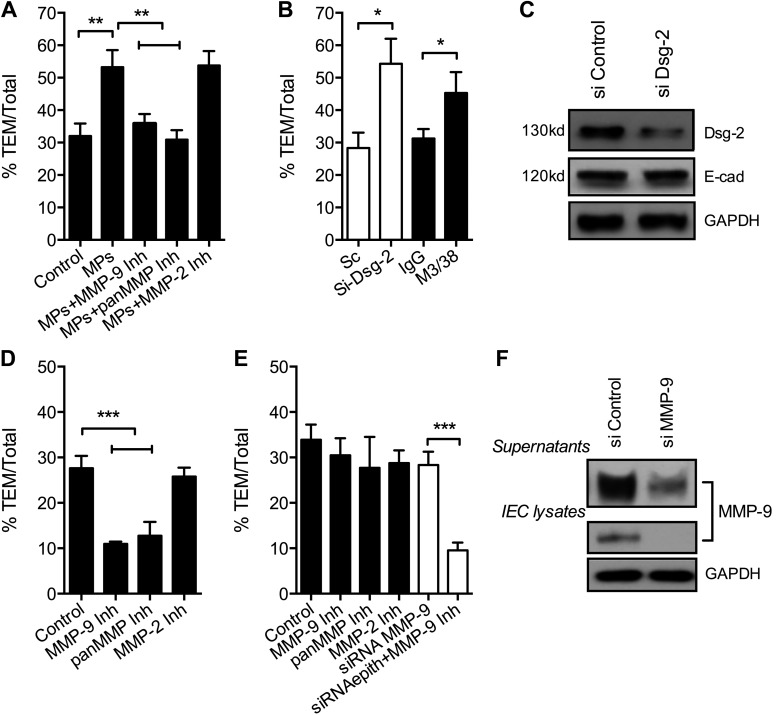Figure 6.
Dsg-2 and PMN-derived MMP-9 collectively regulate PMN TEM. A) To examine whether PMN-MP binding to IECs can affect PMN TEM, assays were performed after IEC preincubation with PMN-MPs (derived from 2 × 106 PMNs, 3 h, 37°C). MP treatment of IECs significantly enhanced PMN TEM. The increase in PMN TEM was prevented by the addition of MMP-9, but not by MMP-2 inhibitors. **P < 0.01. B) To determine the contribution of Dsg-2 to the regulation of PMN TEM, PMN TEM assays were performed after siRNA- or antibody (anti-Gal-3 inhibitory antibody, M3/38)-mediated down-regulation of Dsg-2. Loss of Dsg-2 resulted in significantly enhanced PMN TEM, similar to that observed with PMN-MPs. *P < 0.05. C) The efficiency of Dsg-2 down-regulation by siRNA is shown by representative immunoblots. D) To establish the role of IEC-derived MMP-9 in PMN TEM, IEC monolayers were pretreated with pharmacological MMP inhibitors (MMP-9 inhibitor II, 100 nM; pan-MMP inhibitor, GM6001, 10 μM; or MMP-2 inhibitor IV, 200 nM, 1 h, 37°C) or with MMP-9 siRNA. Immediately before the addition of PMNs, IECs were washed, so that migrating PMNs were not exposed to the inhibitors. No significant effects of inhibitors on PMN TEM were observed. ***P < 0.001. E) PMN TEM assays were performed in the presence of MMP inhibitors (added to the top chamber of cell-migration assay plates at the same time as PMNs) to ensure exposure of both PMNs and IECs. Inhibition of MMP-9 using specific MMP-9 inhibitor or pan-MMP inhibitor, but not MMP-2 inhibitor, significantly decreased PMN TEM. ***P < 0.001. F) The efficiency of MMP-9 down-regulation by siRNA both in cell lysates and in supernatants (secreted MMP-9) is shown by representative immunoblots. A, B, D, E) Three independent experiments where at least 3 migration assays were used for each condition. C, F) Immunoblots are representative of 3 independent experiments.

